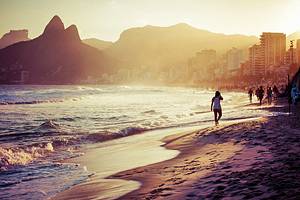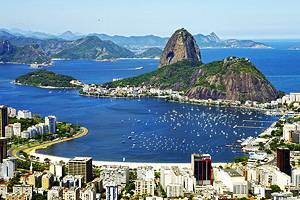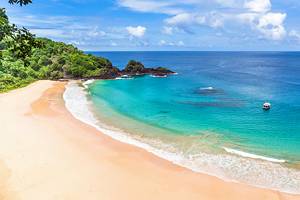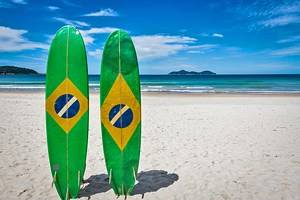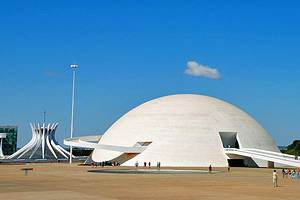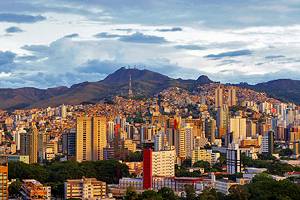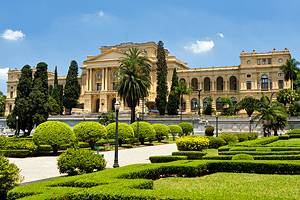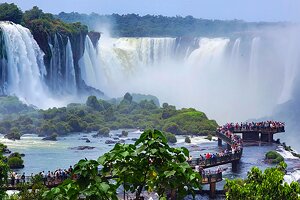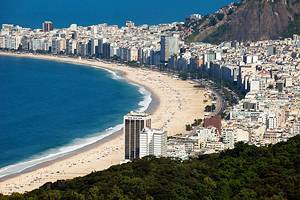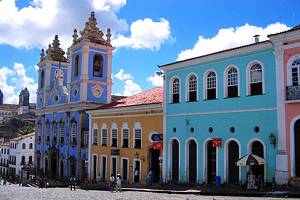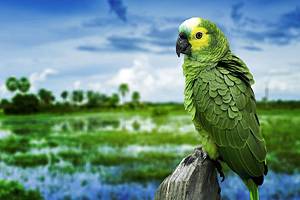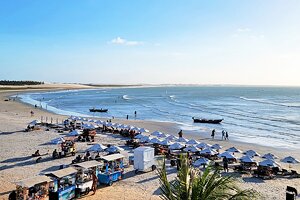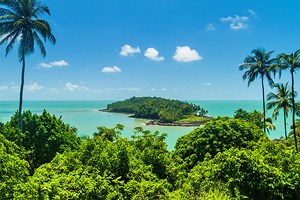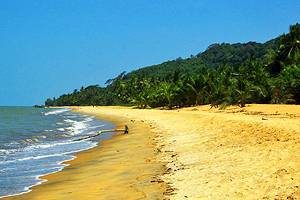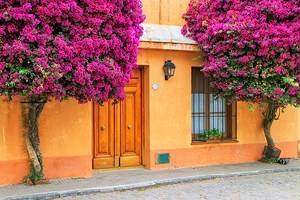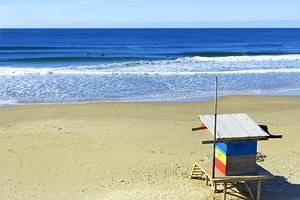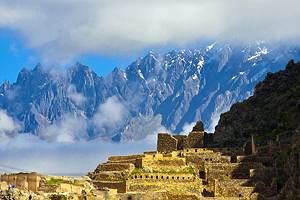Brazil in Pictures: Beautiful Places to Photograph
Brazil is perhaps most famous for its never-ending shorelines and beaches that go on forever, but this tropical South American country is also home to breathtaking mountains and rainforests, diverse wildlife, and great weather year-round.
As the fifth largest country in the world, Brazil has unexpected beauty waiting at every corner. And while it would take months to even begin to discover the wonders of this nation, here are some of the most beautiful spots to photograph around the country.
- Iguazu Falls
- Sugarloaf Mountain
- Farol de Itapuã
- Fernando de Noronha
- Praia do Rosa
- Chapada dos Veadeiros
- Lençóis Maranhenses
- Pantanal
- Poco Encantado
- Chapada Diamantina National Park
- Vale da Lua
- Amazon Rainforest
- Parque da Cidade
- Botafogo Bay
- Trancoso
- Jericoacoara
- Porto de Galinhas
- Paraty
- Mount Roraima
Iguazu Falls

Sitting on the Iguazu River right on the border between Brazil and Argentina, Iguazu is the largest waterfall in the world. Most of the tallest, largest falls are on the Argentinian side, which means visitors to Brazil have the best views. The falls' most impressive sight is probably the Devil's Throat Canyon, an 80-meter-deep canyon much of the river falls into. This is a top attraction in Brazil and Argentina.
Sugarloaf Mountain

The Harbor of Rio de Janeiro is one of the seven natural wonders of the world. In the heart of it is Sugarloaf Mountain, a granite and quartz hill rising from the water. It's one of the most photographed sights in the city. The area is popular with rock climbers – Sugarloaf has 270 climbing routes – and visitors who come to catch the stunning open views from the cableway that crosses over the bay.
- Read More: Tourist Attractions in Rio de Janeiro
Farol de Itapuã

The 21-meter-tall Itapua lighthouse sits right on the coastline, surrounded by a soft, white beach and towering coconut trees. The nearby Salvador, Bahia city is one of the oldest colonial cities in the continent and one of the best examples of Portuguese architecture in South America.
- Read More: Tourist Attractions in Salvador
Fernando de Noronha

Of the 21 islands and islets that make up the Fernando de Noronha archipelago, only the main one is inhabited. A popular destination for nature lovers, the waters around the islands are home to humpback whales, dolphins, and sea turtles.
Praia do Rosa

Praia do Rosa offers seven kilometers of perfect pink sunrises. With waters just rough enough for windsurfing and perfect winds for kitesurfing, the beach is the ideal destination for active afternoons. For those in a more contemplative mood, there's always a chance to spot whales in the distance.
- Read More: Beaches in Brazil
Chapada dos Veadeiros

Chapada dos Veadeiros National Park sits right on top of one of the oldest plateaus on Earth. The rock formations in the area are rich in crystals, believed by some to have strong healing energy and curative powers. The park is also well known for its waterfalls, some of which are 120 meters tall.
Lençóis Maranhenses

Lençóis Maranhenses is a coastal park covered almost completely with rolling sand dunes, which give the area the appearance of a desert. During the rainy season, between January and May, the dunes flood, causing the formation of freshwater lagoons and the wavy look that characterizes the area. Ecotourism is a major attraction of the park, which offers everything from canoeing to ATV riding to rustic camping.
Pantanal

The world's largest tropical wetlands are home to a massive number of species, including the largest jaguar population on Earth; a large number of migratory bird species; the giant yellow anaconda; and the giant river otter, which can reach up to 1.7 meters long. The pantanal can only be explored on motorboats or small airplanes, as there are almost no roads that cut through the area.
Poco Encantado

A water-filled cavern, Poco Encantado (Enchanted Hole) is magical at very specific times of the day, when the sunlight bouncing on the lagoon creates deep shades of blue. The lagoon can only be reached by spelunking into the ground. Poço Azul (Blue Hole) is a similar nearby cave where thousands of prehistoric fossils were found underwater in 2005.
Chapada Diamantina National Park

The Chapada Diamantina (Diamond Plateau in Portuguese) is a mountainous area in northeastern Brazil. Famous for its peaks and desert vegetation, the region is also home to deep and intricate cave systems, steep cliffs, and trekking paths that go on forever. The crystal rivers within the park are perfect for canoeing, swimming, and even snorkeling.
Vale da Lua

The Vale da Lua (Moon Valley) is aptly named, as the rocky landscape looks very similar to the crater-like surface of the moon. The area was formed over 600 million years ago, as lava flows and a roaring river dug into the landscape, shaping and molding the rocky terrain into the unusual environment that exists today.
Amazon Rainforest

The largest tropical rainforest in the world extends over nine countries, although 60 percent of it grows within the borders of Brazil. Over 50 million years old and home to unparalleled biodiversity, the Amazon offers amazing opportunities for river cruises, multiple-day jungle trekking, and special tours that can take you to sleep deep into the forest.
Parque da Cidade

Parque da Cidade might just the best place for a view over the Rio de Janeiro bay – a hidden gem that gives you wide-open views over Sugarloaf Mountain and the Christ the Redeemer statue that defines the city. Aside from benches and gazebos to sit down and look out over the beaches below, the park also offers special ramps for non-motorized flights to jump over the cliffs.
Botafogo Bay

Surrounded by hills and home to a soft stretch of beach, the bay is always buzzing with energy. Jump on the cable car, rent a kayak, or hop onboard a cog train for a ride through the Tijuca Rainforest and up the hills that hosts the giant Christ statue.
Trancoso

A tiny beach town that's often referred to as "the best-guarded secret in Brazil," Trancoso is made up of colorful adobe houses and a 24-kilometer stretch of golden sands and turquoise waters perfect for swimming. Trancoso is a place where time stands still. Lost in the jungle and not that easy to access, it's a place to escape and find silence and peace.
Jericoacoara

Hidden behind massive sand dunes, the beach of Jericoacoara is filled with golden sands and palms swaying in the wind. Once a sleepy fishing village, the area around Jericoacoara is now a national park. There are no paved roads here, and most destinations can only be reached by foot – and that includes climbing the dunes to watch the sun set over the ocean.
Porto de Galinhas

The bright-green waters of this popular beach are just one of its many charms. There are also natural pools here, plenty of ecological trails, chances for diving, and sophisticated local cuisine. Ecotourism enthusiasts will love the green undertone of all activities here, including a campaign to protect seahorses and coral.
Paraty

Paraty is a UNESCO World Heritage-listed city that sits on the Costa Verde, a long corridor of lush vegetation on the Bay of Ilha Grande. With stunning Portuguese colonial architecture and cobblestone-paved streets plus a background of lush mountains, tropical forests, and large waterfalls, Paraty is never short of stunning photo opportunities.
Mount Roraima

Mount Roraima sits along the borders of Brazil, Venezuela, and Guyana and though technically most of this table-top mountain falls into Venezuelan territory, the views are stunning from every side of the border. Roraima is over 1.6 billion years old, making it one of the world's oldest geological formations. There's plenty to see and do here, including rock climbing and bird-watching.


